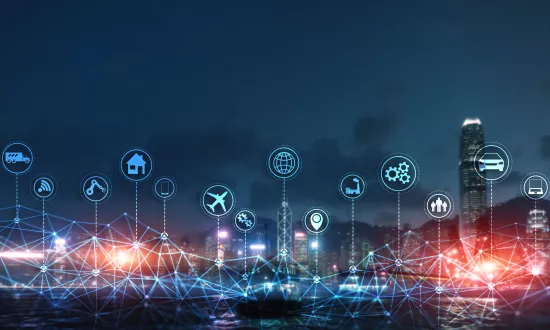How first responders connect to 5G private networks
Estimated reading time: 5 minutes
HELP IS ON THE WAY – AND IT’S CONNECTED TO A PRIVATE 5G NETWORK
First responders need fast and reliable communications in chaotic situations. It’s why emergency services are among the earliest adopters of private 5G networking…
How small can you make a private 5G network? What about the size of a truck?
No, this is not theory. In the US, such a vehicle already exists. In July 2021, mobile operator Verizon unveiled THOR (Tactical Humanitarian Operations Response), a modified Ford F650 designed to give first responders access to fast and reliable communications in nearly any environment.
Under the ‘hood’ of THOR is a fully functional 5G ultra-wideband network combined with a MEC platform. In simpler terms, the truck is its own private telco network.
THOR might seem like a novelty. But in fact, many other similar experiments are in place across the world. In India, for example, Bharti Airtel partnered with Apollo Hospitals and Cisco to create a 5G Connected Ambulance. It is fitted with onboard cameras, bodycams for paramedic staff and telemetry devices that transmit patient health data to hospitals in real-time.
These two innovations should not surprise us. Private 5G networking and emergency services make a perfect combination. When first responders arrive at a chaotic and unpredictable disaster scene, they need reliable communication in order to:
• Map their exact location
• Access information such as building plans
• Access secure medical records
• Share real-time operational information with each other and with their command centres
• Share video images from wearable cameras
• Access drone footage
Traditionally, they have relied on Wi-Fi, 3G or 4G to connect. But all of these network types have built-in limitations based on range, speed, reliability and capacity.
5G overcomes all these hurdles. Fully ‘standalone 5G’ connectivity offers download speeds that can reach 10 gigabits per second (up to 100 times faster than 4G), with latency as low as 1 millisecond. 5G supports connection densities of up to one million devices per square kilometre, so there’s no danger of network overload in a chaotic and crowded disaster scene.
And 5G coverage is growing fast. According to the GSMA, 5G networks are likely to cover one-third of the world’s population by 2025.
Think private networking is a future tech? Here are 7 live deployments
How can MNOs ‘win’ the $64 billion private networks opportunity? Trust
So if 5G is so fast and ubiquitous, why shouldn’t emergency services simply connect to the public network? Why the need for a private deployment?
Well, it really comes down to customization.
In previous telco generations, the carrier provided the same service to all customers. A bespoke level of service wasn’t possible. However, 5G gives MNOs the power to carve up their networks into discrete ‘slices’. They can offer these private networks to organizations with guaranteed service level agreements based on speed, latency, reliability and security.
The latter of these is especially important. Security is paramount in emergency/military situations. In 5G architecture, it’s built in. 5G allows for Multi-Access Edge Computing, which means that data is processed at the edge of the network. Thanks to MEC, first responders can process data locally rather than in a distant data centre. This minimises the risk of a hack because the information does not move beyond the private network.
Of course, even mission critical users have to connect to public networks much of the time. It raises the ‘handover’ question: how they switch between public and private. This is where remote SIM provisioning comes in.
Thanks to solutions provided by specialists, emergency services teams can switch instantly and seamless between public and private connectivity. The remote SIM provisioning platform identifies the user and the data, and downloads the required profile securely. There is no manual intervention needed by the user. The first responder can simply focus on his or her mission.


